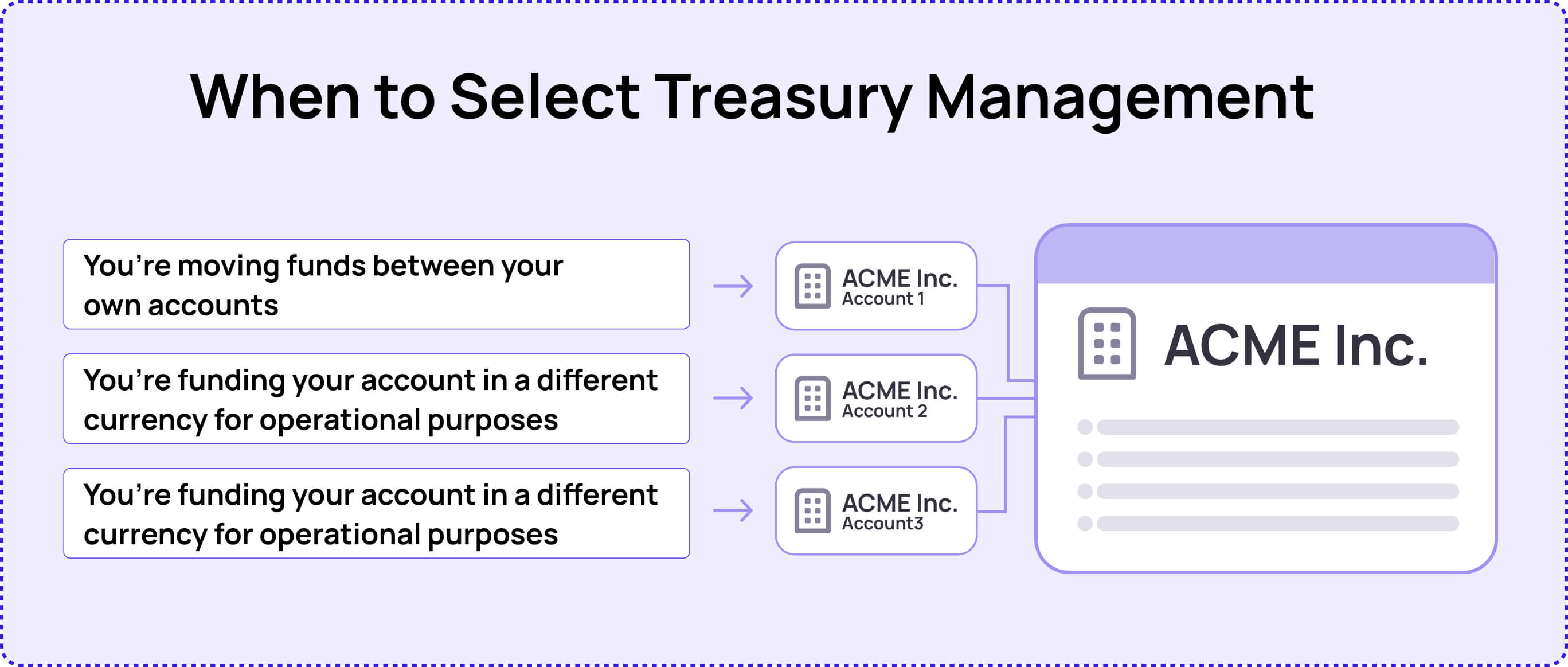Making Treasury Management Transactions
Treasury management (T/M) or Liquidity management refers to transactions where funds move between accounts controlled by the same entity. These are not payments to external parties, but internal transfers, funding movements, or FX conversions used to manage your business's liquidity.
When to Select Treasury Management
You should mark a transaction as Treasury Management if:
- You’re moving funds between your own accounts
- You’re funding your account in a different currency for operational purposes
- You’re converting balances as part of your internal treasury strategy

Required Documentation
To ensure compliance and avoid transaction rejections, each entity involved in a Treasury Management transaction must meet specific documentation requirements.
For Non-Financial Entities

These entities must complete KYB with the following documents:
Required:
- Business Registration Document
- Shareholders Registry
- Tax Certificate
- Proof of Address
- Flow of Funds
For more details on the KYB process for non-financial entities, please read this article.
For Financial Institutions (FIs)
.jpg)
- Business Registration Document
- Shareholders Registry
- Bank Statement
- Balance Sheet
- Tax Certificate
- Anti-Money Laundering (AML) Policy
- Proof of Address
- Flow of Funds
Financial institutions are also required to complete an attestation confirming that they will only use their named bank account for their own treasury management — not on behalf of customers or third parties.
For more details on the KYB process, please read this article.
Why documentation matters
Submitting the correct documents ensures your treasury transactions are processed without delay. Incomplete or missing KYB information may result in rejections or compliance reviews.
If you have questions about the documents required, please contact our support team.